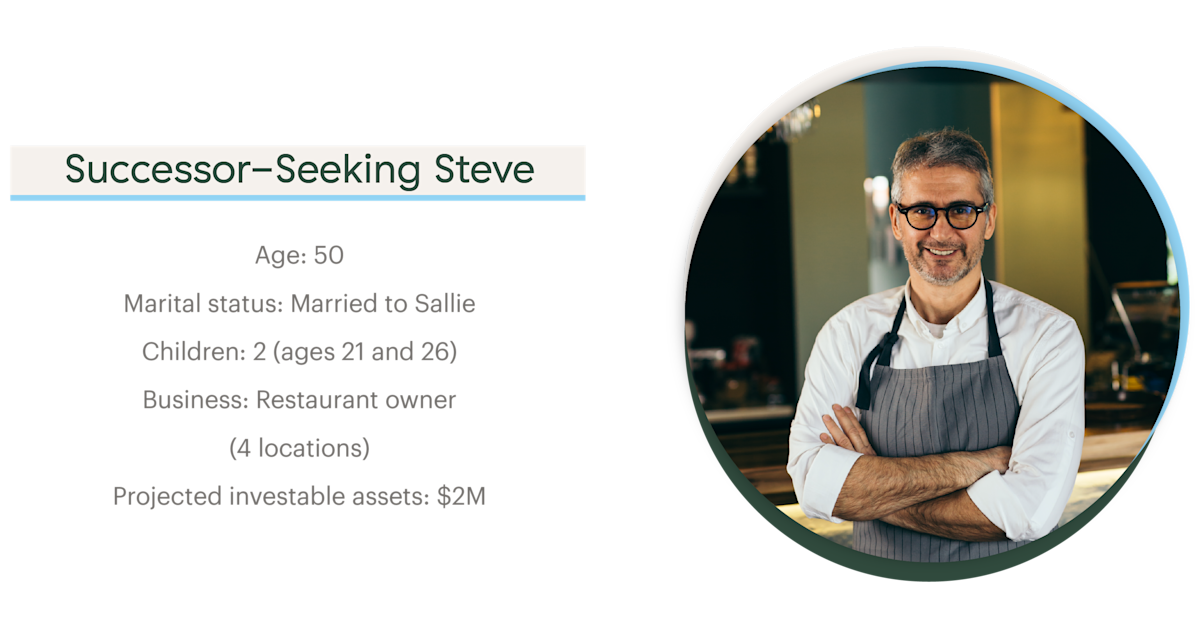Prospects who feel understood are more likely to do business with you, and the same rule goes for established clients. If they believe you understand their needs, they’re more likely to keep doing business with you.
It’s clear, then, that a better understanding of their audience is what every financial advisor needs when it comes to growth. But how can you get there?
Client personas are a powerful analytical tool designed to help you do exactly that. That’s why many advisors are creating client personas to identify and target their ideal audience—and to strengthen their marketing strategies.
Let’s look at how you can start using this powerful growth marketing strategy for advisors.
Why Use Personas?
As other advisors get more sophisticated with their marketing, prospects looking for financial advice will expect the same from your firm. To compete, you must engage your ideal audience through relevant, targeted messaging.
Client personas bring your ideal prospects to life and enable you to empathize with their challenges and concerns. The understanding that comes with empathy will help you craft relevant communications your audience will want to read.
What Is a Client Persona?
A client persona identifies the key traits of a client segment you want to communicate with and summarizes them in a reference document. Each client persona should be assigned a name, a headshot, and a detailed description of their demographic and motivational characteristics.
Many advisors use several personas—anywhere from two to five. Together, your personas represent your ideal audience.
4 Steps to Creating Client Personas
1) Gather information. Research is the first step in creating client personas. Talk to some of your most valued clients to find out why they hired you. Ask them:
-
What made you think about hiring an advisor or changing advisors?
-
How did you go about looking for an advisor?
-
What were your biggest concerns in making your decision?
-
What other options or firms did you consider?
-
What did you like or dislike about the other options?
-
Was there a personal situation that made you choose our firm?
-
How does working with us help you?
Be sure to write down exact quotes. That way, when you’re developing marketing materials, you can use your clients’ language—which your target audience is likely to relate to.
2) Segment your data. Make a list of the characteristics your ideal clients have in common. This list should include:
-
Demographic information, such as age, gender, family status, and profession
-
Trigger events for hiring an advisor
-
Investable assets
-
Needs, values, and aspirations
-
Concerns and motivations
-
Social and recreational activities
-
Social media and news consumption habits
Segment this information according to the common characteristics of the clients you wish to target. Each ideal segment you identify will become one of your client personas.
3) Build a set of unique personas. Bring your ideal clients to life by giving each persona an engaging name, headshot, and story. Keep going until you create a set of personas that captures your ideal audience as a whole. There’s no “right” number—each firm needs to align this step with its business goals.
For instance, if your practice focuses on business owners nearing retirement, you might identify one persona as “business owners seeking a successor.” To make this persona memorable, assign it an alliterative name, such as “Successor-Seeking Steve.”
Steve’s persona might look like this:

Concerns |
Trigger Events |
|
|
Client Needs |
Media Engagement |
|
|
4) Tailor marketing strategies to each persona. Once you’ve created your personas, be sure to use them to tailor your marketing strategies. Your staff should be familiar with them, too. When used consistently, client personas can help strengthen the brand reputation and growth marketing strategies for your firm.
Approaches to Outsourcing
Outsourcing client persona creation is an alternative to the do-it-yourself approach. Many marketing professionals and agencies offer this service, although it’s important to verify they have the skill and experience required to create informed personas. Be sure to ask outsourcing candidates for their persona development examples and customization costs.
You may also wish to consider if your firm partner’s marketing department can help. For advisors within the Commonwealth community, our Brand Studio offers ready-made personas as part of our Strategy Builder tool. Learn more about Brand Studio and how Commonwealth helps our advisors achieve their business goals with complete marketing support.
Please consult your member firm’s policies and obtain prior approval for any sales ideas or marketing materials you would like to use with clients.


